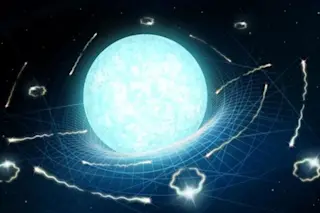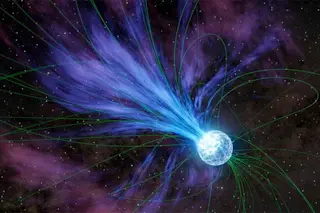An astronaut wakes up in a spaceship, with no memory of how she got there. Sitting alone in a chair, she wonders: “Where in the universe am I?”
The ship has no windows. Its instruments are dead. The only clue is the push of the chair against her body. Phew, there’s gravity, she thinks. Her vessel must still be on Earth.
But then a second possibility occurs to her. The ship could be accelerating through space, pressing her into the seat like a race car picking up speed. From inside the vessel, there is — terrifyingly — no way to tell.
This spacefarer’s dilemma would have been familiar to Albert Einstein. His 1915 general theory of relativity built on the notion that gravity and acceleration are not just easily confused, but are one and the same. This equivalence, “the happiest thought” of Einstein’s life, was his starting point for redefining ...















